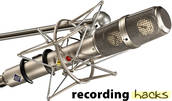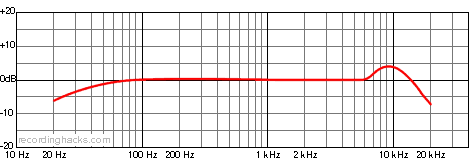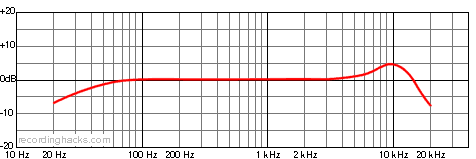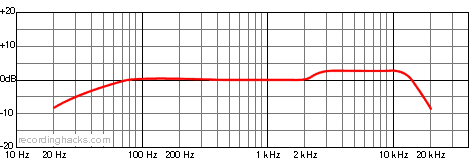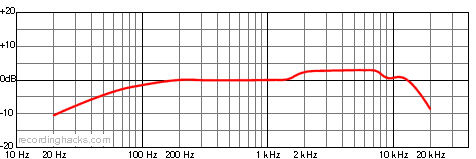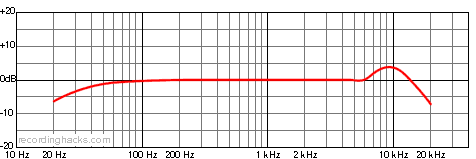






 Neumann USM 69
Neumann USM 69
Multi-Pattern Condenser Stereo Microphone
The USM 69 is a stereo FET condenser, with two large-diaphragm capsules stacked atop one another. Both capsules support five selectable polar patterns, enabling the microphone to produce numerous single-point stereo patterns, including X-Y, Blumlein and Mid-Side.
The mic is based on the SM 69 fet, and uses identical capsules.
Neumann
[The USM 69 i’s] acoustical characteristics are identical to those of the well-known SM 69 fet stereo condenser microphone [because] the entire capsule configuration has been adopted from it unchanged.
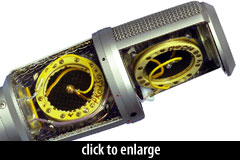 In keeping with Neumann’s lineage of stereo large-diaphragm mics dating to the original SM69, the USM 69 uses capsules from the K67 family — specifically, in this case, the K870 from the U 87 Ai.
In keeping with Neumann’s lineage of stereo large-diaphragm mics dating to the original SM69, the USM 69 uses capsules from the K67 family — specifically, in this case, the K870 from the U 87 Ai.
The K870 is a dual-diaphragm 34mm capsule with center-terminated 26mm Mylar membranes.
Two 5-way pattern switches are mounted on the body of the microphone. The two capsules can be independently set to Omni, Wide Cardioid, Cardioid, Hypercardioid, or Figure-8.
The upper capsule housing rotates in relation to the fixed lower capsule, +180°–-90° (270° total). This allows the microphone to be used for a variety of stereo applications:
- X-Y - Set both capsules to Cardioid; rotate the top capsule 45°–120°.
- Mid-Side - Set the lower capsule to Cardioid; set the top to Figure-8 and rotate it 90°.
- Blumlein - Set both capsules to Figure-8; rotate the top capsule 90°.
Neumann suggests that both capsules can be configured identically and recorded simultaneously to a second input channel for backup purposes when recording critical material.
Alternatively, the output from the two capsules can be combined externally to produce “exotic” pickup patterns, such as variations of wide- or hypercardioid, that are not supported by either single capsule.
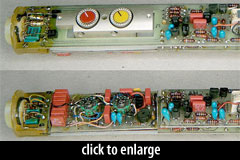 The mic body houses two separate and independent amplifiers, one for each capsule. These circuits contain a non-switchable subsonic filter that “effectively suppresses subsonic interference as caused by wind or structure borne noise.”
The mic body houses two separate and independent amplifiers, one for each capsule. These circuits contain a non-switchable subsonic filter that “effectively suppresses subsonic interference as caused by wind or structure borne noise.”
Output transformers are used for impedance conversion. The mic has a single XLR5M output connector.
Martin Schneider, Neumann
The USM69 is basically a double U89 circuit.
Two colors are available:
- USM 69 i - satin nickel
- USM 69 i mt - matte black
(Circuit photo credit: Saturn-Sound.com)
The Neumann USM 69 is also known as: USM 69 i, USM69.
The mic was released in 1979.
Specifications
| Pickup Patterns | Pads & Filters |
|---|---|
|
Omnidirectional
(13 mV/Pa; 20 - 20,000 Hz) Cardioid (13 mV/Pa; 20 - 20,000 Hz) Hypercardioid (13 mV/Pa; 20 - 20,000 Hz) Bidirectional (13 mV/Pa; 20 - 20,000 Hz) X/Y Stereo (13 mV/Pa; 20 - 20,000 Hz) Mid-Side Stereo (13 mV/Pa; 20 - 20,000 Hz) Wide Cardioid (13 mV/Pa; 20 - 20,000 Hz) Blumlein (13 mV/Pa; 40 - 20,000 Hz) |
|
| Capsule Dimensions | Impedance | SPL/Noise |
|---|---|---|
| Diaphragm diameter: 26mm Capsule diameter: 34mm |
150 Ohms (Low) | Max SPL: 132 dB Self-noise: 13.0 dB(A) |
| Weight | Length | Max Diameter | Interface(s) |
|---|---|---|---|
| 510g (17.99oz) | 293mm (11.54'') | n/a |
|
| Power Specifications |
|---|
|
Did we get anything wrong on this page? Please let us know!





